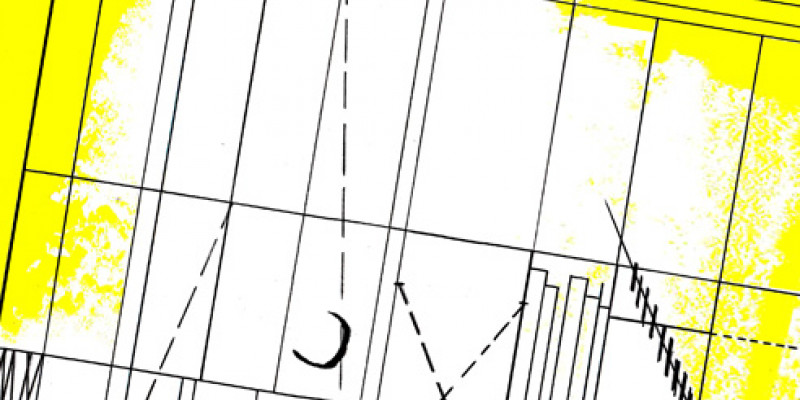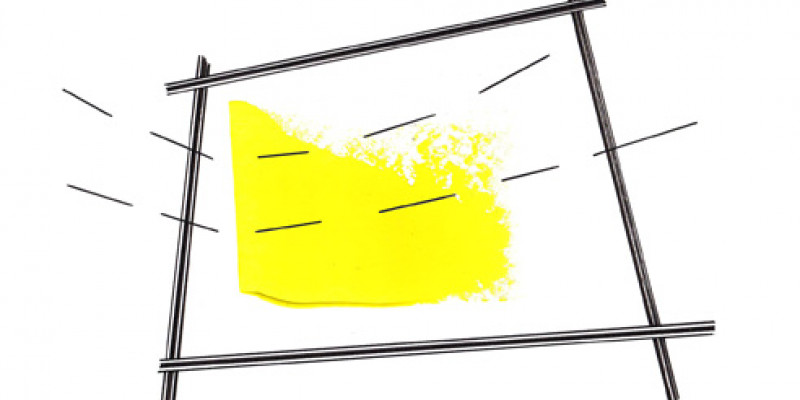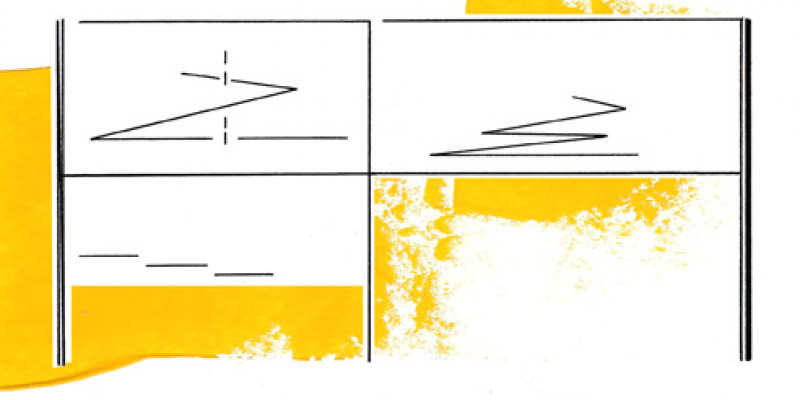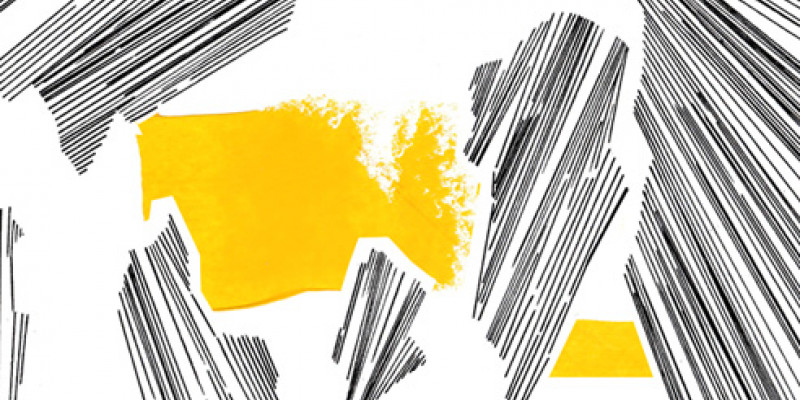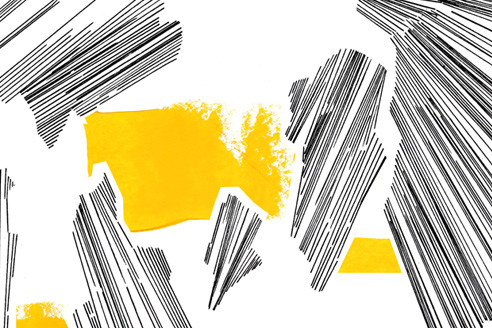
Objective: The object
"What happened to the strong position of German modernism in the 90s?” – the editors of Seismograf so straightforwardly asked to kick of this issue of Seismograf. Well, besides it being a really comprehensive question – the term ‘German modernism’ covers a vast body of history, knowledge and music – it also implies a specific development, but casts no light on the type of development. Aesthetical, sociological, cultural, economical? What is a position?
So, as a way of short-circuiting the task, this article suggests that there is at least one specific feature in modernistic music that is stable. The characteristic of de-familiarization through objectivism can be observed in German modernistic music. Historically and today.
The inspiration for this hypothesis comes from a notion on modernism made by the Spanish philosopher Ortega Y Gasset. In 1925, in an essay with a title that translates ‘The Dehumanization of Art’, Y Gasset points out a feature of modern art (and modern music). He says that:
“Modernists have declared that the intrusion of the human in art is taboo. Now, human contents, the component elements of our daily lives possess a hierarchy of three ranks. First the order of persons, then the order of living things, and finally, that of inorganic things. Art today exercises its veto with an energy towards the hierarchical altitude of the object. The personal is, by being the most human of the human, what is most shunned by the modern artist” (my italics).[i]
In the eyes of Ortega Y Gasset modernist composers deliberately remove their music from the audience by moving towards a new objectivity and away from what people know – the personal.
I have found another starting point, closer to the creators of the modernistic music world, in the writings of Arnold Schönberg, contemporary to the bold observations made by Ortega Y Gasset. In 1930, in the essay ‘New Music: My Music’, Schönberg tries to explain how his music differentiates itself from other music in the very way that the ideas in the music are removed from phenomena that are obvious to people. As if he and his fellow modern composers were communicating with an audience from the past, who know nothing of the objects referred to in the sentences. In his imaginary conversation with uncomprehending people of the past, he finds his analogy on the development of music in the development of the vocabulary of transportation:
“’In weather like this we can’t go by bus, because we should be wet through even getting from the bus stop to the theatre’… By now, a man [from the past] who knows nothing of buses and bus stops will be out of his depth.[ii] ”
Although Schönberg uses images of the modernization of objects, he is in fact talking about chords. About chord progressions developed to establish music on another basis than tonality. The point in this context is that Schönberg sees it as important in modern music that it has a de-familiarizing effect on the audience. As the mere objects of the music have become increasingly strange to the audience.
Y Gasset and Schönberg are, in these quotations describing different aspects of objectification. They have quite different views. Y Gasset is talking about music moving away from the personal because of a general objectification. Schönberg is talking solely of musical material as objectified. But, they both recognize objectification as a part of modernistic music.
So, where could we find a starting point in musical production of objects that have a de-familiarizing function? Well, in the music of Gustav Mahler for instance. In his symphonies, Mahler composes objects of sound that have a special characteristic that, at least, since his reception in the 1960s, have been heard as something else than musical sounds. Mahler produced sounds of nature or objects or sounds like quotations of everyday sounds, which have a function that makes it possible to perceive them as being outside the streaming symphonic music of the piece. For instance, as signals of something outside the music.[iii] A number of musicologists have devoted research time to these objects – to find them and discuss their meaning.[iv] The purpose of mentioning them in this text is solely to say that they can be understood to be there, and that they can be understood to constitute some sort of otherness in the music and maybe even establish a de-familiarization in the music.
The reader would maybe, right here, object to the notion of de-familiarization in the music of Mahler. That the logic of such a historical consideration is a tautology, because the idea of Mahler’s extramusical elements itself is in the very modernistic reception in the 1960s that it is said to support. This is in a way true. The argument of this article, about modernism, is solely created inside the sphere of modernistic thinking – of which I am also a part.
An obvious place to spot the concept of Mahler’s modernistic objectivity in German music is in the aesthetics of the German composer Helmut Lachenmann, i.e. his works that reside in the genre called ‘instrumentale musique contrète’ constituted and named by Lachenmann himself in the sixties and early seventies. Lachenmann refers to the notion of a Mahler connection in an interview at a symposium in 1977.[v]
The interview circles around the renewed, more popular European reception of the music of Gustav Mahler (ihr Verständnis) and a potential new turn in this, i.e. a sign of progress in music culture, or maybe a sign of regression into a music culture, where the (mis)understanding of music as a medium of the emotional dominates.[vi] Relevant to this article, Lachenmann openly states that he sees Mahler’s use of ‘nature sound’ (Naturlaut) as a direct link to his own way of thinking and composing music:
“The ‘nature sound’ in Mahler’s music seems to me to be a phenomenon… that I, when speaking of pieces like ‘Air’, ‘Pression’ and ‘Kontrakadenz’, have named ‘instrumentale musique contréte’. It seems to me – not in the specific content as much as in the function – to be an obvious bridge to Mahlerian nature sound”.[vii]
Lachenmann exemplifies the bridge between Mahler and himself by a series of musical elements. The imitated sounding of the birds, the bells, the signals, the quotation of songs and more, have a similar function in Mahler’s music as Lachenmann's emancipated sounds of wood and strings – and also the unwilling vibrato of a tuba player. He frames the function as a consciously art free way of creating art.
An obvious example of ‘Naturlaut’ by Lachenmann is the cello piece Pression. In this piece, the instrument is used in its ‘most original, non-artistic way: as a resonating body for realizing its basic sounding potential’[viii], as the German musicologist Hans-Peter Jahn puts it. It is a piece constructed of different playing techniques with a common ground in the pressure the musician puts on different parts of the cello. The strings, the bow, the body, the chair, the saddle – and how the cello player in that process, brings a series of sounds to life that are normally suppressed by the musician in order to bring forward a melodic, pure tone as free of noise as possible. In Pression, it is the other way around. Instead of using the instrument as a medium for a composer’s melodic ideas, the sounding instrument is the music. The cello as an object is exactly what we should be listening to.
Lachenmann sees this way of setting sounds free that previously were excluded from the piece of music, as a common feature by Mahler and himself, where the taboos of society are spoken out.[ix]
In other words, Lachenmann finds that Mahler and himself, in using nature sound (Naturlaut) as ‘extramusical’ elements, introduce an otherness to the listener and that sets off a process that holds potential for moving the listener away from his or her habitual understanding of music.
With Pression, the role of the cello as a deep poetic voice in music is gone. The instrument is instead a sounding example of a naturel body of sound. And, as objectified music it has the ability to de-familiarize the listener.
If we jump to the present time, Simon Steen-Andersen is an interesting person to mention. Whether he, like Lachenmann, should be understood as a spokesperson for the same sort of liberation of sound as a way of liberating art from societal conventions, is unclear. The 38 year old Danish composer is not known to accompany his pieces with broader aesthetic considerations linking his music to a societal reality.
But, he has some of the same aesthetical considerations as Helmut Lachenmann. And, he can in a way be seen as a German composer. Not by civil status, but he lives in Berlin and has presented his music in Germany more times than most composers over the last decade.[x] And, he has introduced the thoughts of the German composer in Denmark (more specific the music of Lachenmann’s pupil Mathias Spahlinger – Steen-Andersen’s own teacher in Freiburg.)[xi] And most importantly, he has composed several pieces that bring the same method of de-familiarizing the listener through objectivity to life.
Two examples of this come with a CD released by Dacapo Records in 2011 entitled Pretty Sound: On And Off And To And Fro (2008) and Study for String Instrument #2 (2009). Both pieces are examples of an investigational idea of pushing electronic sound equipment to the limits of its intended use in order to force out new, surprising sounds nobody thought possible.[xii]
On And Off And To And Fro is a chamber piece for saxophone, cello, vibraphone and three megaphones. The formal development is, in the context of this article, interesting as it undergoes a change from normal acoustic playing on the instruments, amplified by the megaphones, to a situation, where the acoustic instruments are brought to the background, because the megaphones begin to produce loud tonal melodies as a result of the feedback interaction. These melodies are not programmed nor played by the operators of the megaphones but simply a random realization of a potential music that lies in the instrument. Again, the sounds of the instrument as an object become the music.
Similar to this, a new surprisingly poetic music arises from a seemingly gold electronic device in Study for String Instrument #2. Here it is a ‘Whammy' guitar pedal (from Digitech) that normally creates a gigantic glissando opportunity for the musician, where it can bend a somewhat distorted tone as much as two octaves up or down. Here it is situated between a guitar and a cello, and the point of the pieces arises, when Steen-Andersen ‘stresses’ the pedal with white noise, and it then, as a result of stress, begins to produce a strange sort of singing by itself. A beautiful melody comes out of nowhere.
These two examples can easily be understood in the same context as Mahler and Lachenmann. As parts of music that are naturally, non-artistically produced by letting objects tone as themselves. It is a compositional strategy that can de-familiarize the listener across the history of German modernistic music. A common modernistic ground of removing music from the personal to objectivity. So, in this very specific way, German modernism has the same position as it has had for some years.
[i] O. Y Gasset (1948): The Dehumanization of Art. New York p. 73
[ii] A. Schönberg (1975): “New Music: My Music”. Style and Idea. London p. 100.
[iii] As stated in H. H. Eggebrecht (1982): Die Musik Gustav Mahlers. München. Eggebrecht calls these elements of the music ‘Vokabeln’ as they point to something outside the music with a meaning established before Mahler wrote his music.
[iv] I.E. Constatin Floros in his books on the symphonies, Henri de la Grange in his or Heinz Harald Eggebrecht in his biography.
[v] “Mahler – eine Herausforderung”. H. Lachenmann (1996): Musik Als Existentielle Erfahrung (ed. Josef Häusler), Wiesbaden 1996, p. 263-69.
[vi] Ibid. P. 263f.
[vii] Ibid. P. 268 (my trans.)
[viii] H.-P. Jahn: “Pression”. H. Lachenmann (1996): Musik Als Existentielle Erfahrung (ed. Josef Häusler), Wiesbaden p. 40
[ix] Häusler p. 268
[x] The last 10 years he has been programmed and broadcasted more than 100 times in Germany, see www.simonsteenandersen.dk/eng_aktuelt.htm
[xi] By bringing Spahlinger to Denmark and hosting the seminar ’Freiburg dot dk’ in 2004 - and introducing him in Dansk Musiktidsskrift, Volume 179, p. 172-73.
[xii] The intentions of the composer are documented in an interview made by this author and can be read as a cd-booklet here.


